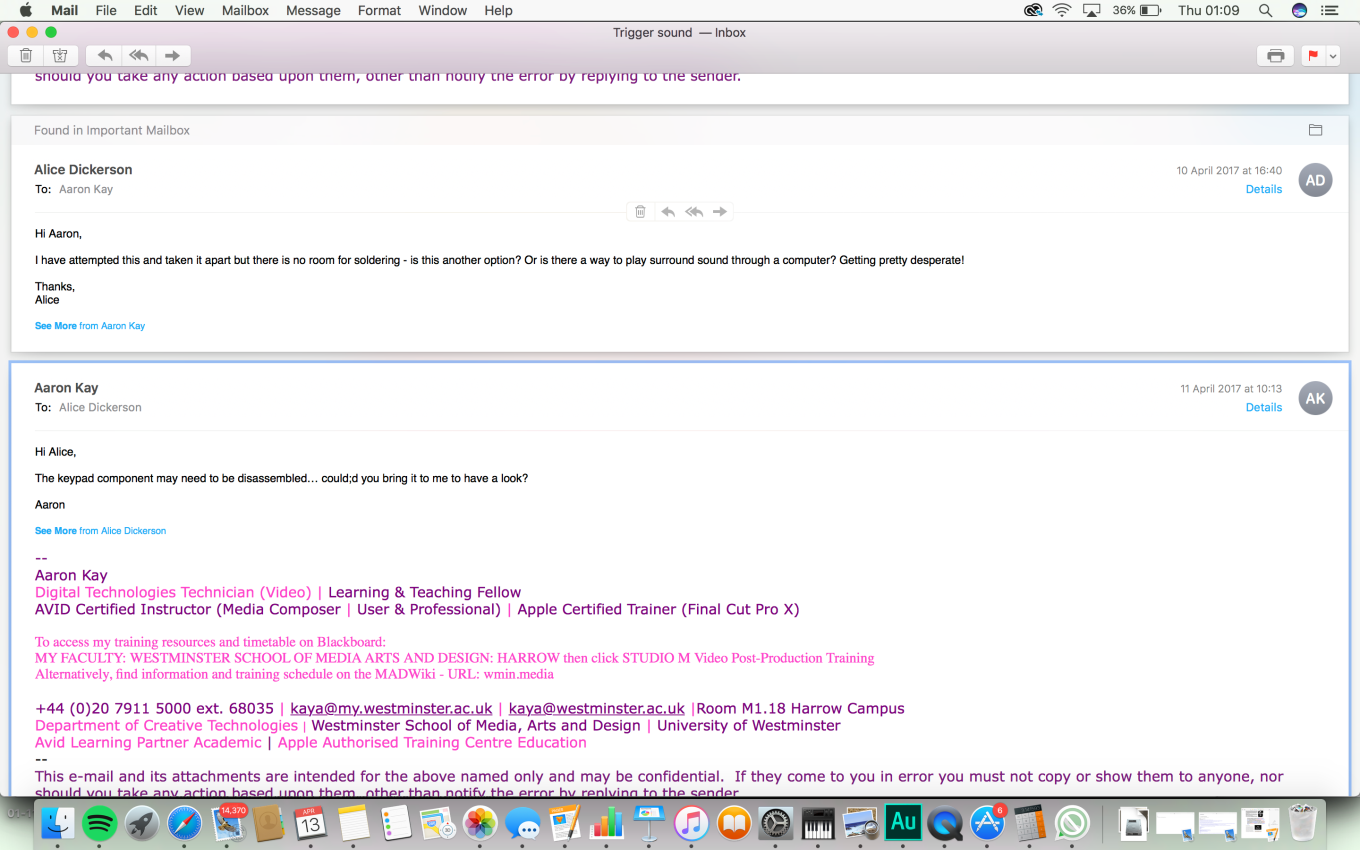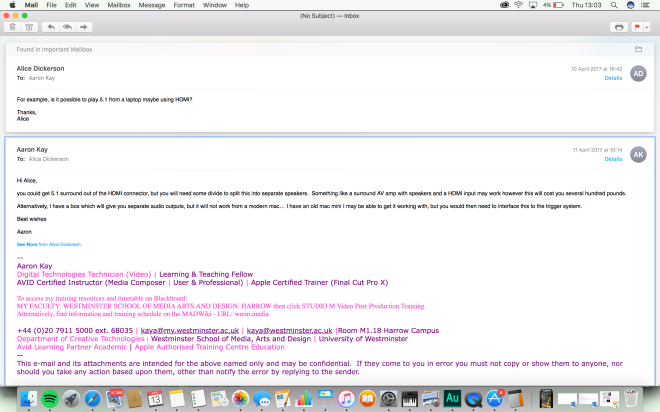Following yesterday’s concerns as to whether the remote control that has been taken apart will be able to be soldered, I contacted Aaron who originally advised me to utilise the remote control method as the easiest approach to controlling the Surround Sound through the switch (the intention of this technical exploration).


Aaron advised me to bring in the remote where we could experiment with the possibility of cold soldering, in order to determine if there is a way to secure connection to activate the play button or not. He also briefly explained that there is a way to use an interface to trigger a separate system with individual audio outputs that could work as a surround sound system, however we agreed to talk about this in further depth face to face.
Meeting with Aaron:
- Aaron tested the conductivity of the inside of the remote by placing a fork between the pieces of circuit board that correspond to the play/pause function and testing whether this triggers the DVD player to play which it did. This therefore proved that there is potential to solder wires onto these pieces of metal, which can then be connected to a relay and controlled by the Arduino.
- In case this soldering doesn’t work for whatever reason, Aaron also discussed the potential of using his Mac mini and separate audio outputs that would act as the surround sound speakers. The issue with this approach is I would need to develop a way for the Arduino to play an audio file from my computer/device adding a further dimension of complexity to this technical element.
Mini Evaluation:
- It is such a relief and really promising that there is a way to activate the DVD player through placing a piece of wire across the two pieces of circuitry that control the play function, proving that this method has the potential to work. The next step is to work with Frank, The EMS Intern to delve into how I can solder two pieces of wire from these pieces of the circuit board to a relay.
- In case the soldering doesn’t work and taking the time pressure into account, I will also investigate further into the potential of using separate audio outputs and an interface to control and trigger the Surround Sound file through a computer HDMI connected system. This is a considerably more complex approach and could pose problems in terms of determining a method and programming code that will easily enable the Arduino to trigger the file from when the switch is pressed. Additionally, it won’t be a surround sound system, instead individual audio outputs which will present practical problems in terms of positioning them in the bed whilst connected to a laptop or device. Therefore, this is a method that I will keep as a back up as it is not ideal and is time consuming in terms of developing knowledge and expertise in areas that I am not currently familiar with.
Next Steps:
- Test using a multimeter with Frank (EMS Intern) and Craig (Electronics technician) to locate the exact area that activates the play function
- Solder two strips of wire onto this area and test again with the DVD player to ensure that it works
- Assuming it does, connect these two pieces of wire to the corresponding terminals of a relay and incorporate into existing circuit
- Order another replica remote incase it is needed at short notice as a contingency option
- Continue to research and explore alternative options and how they can be technically and practically achieved and incorporated into my existing electronics work as well as assessing to what extent they support the project intention